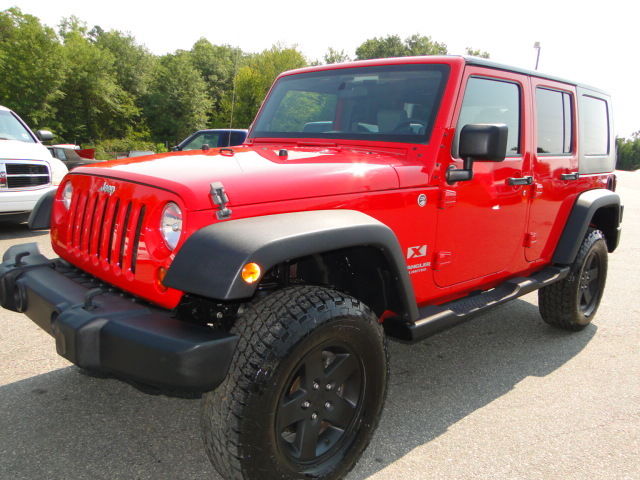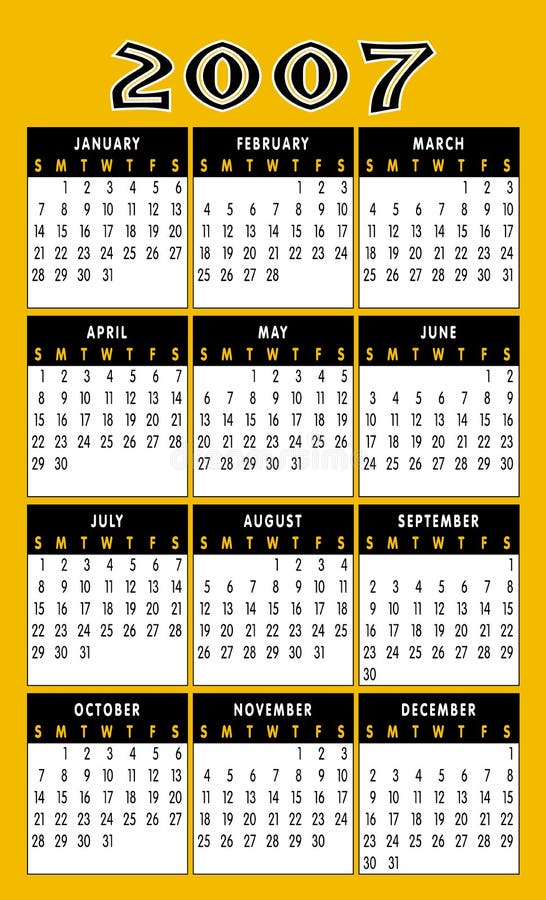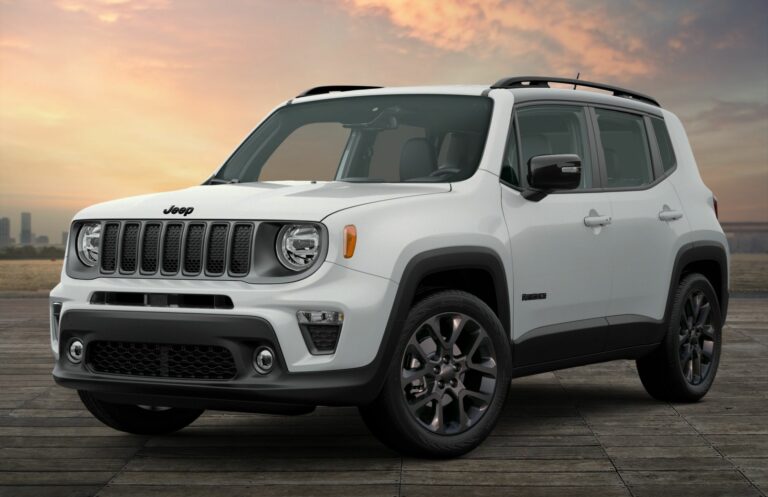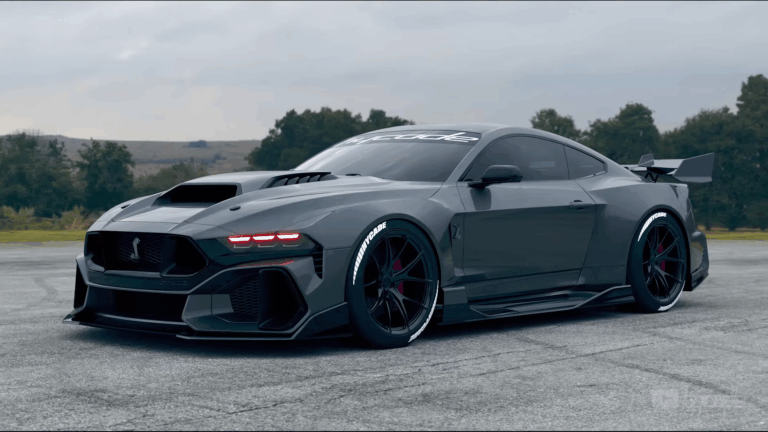Used 1995 Jeep Cherokee For Sale: Your Comprehensive Guide to Finding and Owning an XJ Icon
Used 1995 Jeep Cherokee For Sale: Your Comprehensive Guide to Finding and Owning an XJ Icon /jeeps.truckstrend.com
The year is 1995. Grunge music is on the radio, Windows 95 is about to revolutionize personal computing, and in the world of automobiles, the Jeep Cherokee (XJ generation) is cementing its legacy as one of the most beloved and capable SUVs ever made. Fast forward nearly three decades, and the Used 1995 Jeep Cherokee For Sale remains a highly sought-after vehicle, not just by off-road enthusiasts but by anyone looking for a reliable, no-nonsense, and surprisingly practical four-wheel-drive machine. This article serves as your definitive guide to understanding, finding, and owning this iconic piece of automotive history.
What makes the 1995 Jeep Cherokee so enduringly popular? It’s a unique blend of rugged simplicity, legendary off-road prowess, and a compact, utilitarian design that perfectly balances capability with everyday usability. For many, the XJ represents the purest form of a Jeep: tough, dependable, and ready for adventure. If you’re considering a Used 1995 Jeep Cherokee For Sale, you’re looking at more than just a vehicle; you’re looking at a lifestyle choice, a canvas for customization, and a true testament to American engineering.
Used 1995 Jeep Cherokee For Sale: Your Comprehensive Guide to Finding and Owning an XJ Icon
Why the 1995 Jeep Cherokee XJ Still Matters
The XJ Cherokee’s continued relevance in the used car market isn’t accidental; it’s a testament to its fundamental design strengths:
- Durability and Simplicity: The undisputed star under the hood is the 4.0-liter AMC Inline-6 engine. Known for its legendary reliability and torque, this engine is often considered one of the best ever built. Paired with robust automatic (AW4) or manual (AX15) transmissions and solid axles, the XJ’s drivetrain is famously tough and easy to maintain, even for the home mechanic.
- Off-Road Prowess: Despite its unibody construction (a pioneering design choice at the time), the XJ boasts exceptional off-road capability right out of the box. Its compact dimensions, short overhangs, and available Command-Trac (part-time 4WD) or Selec-Trac (full-time capable 4WD) transfer cases make it incredibly agile on trails. It’s a genuine go-anywhere vehicle that can tackle far more than its unassuming exterior suggests.
- Modifiability: The aftermarket support for the XJ Cherokee is immense. From lift kits and heavy-duty bumpers to upgraded axles and armor, virtually every component can be modified or replaced to suit specific needs, whether for hardcore rock crawling or overland expeditions. This makes it an ideal platform for custom builds.
- Practicality and Size: Unlike modern behemoth SUVs, the XJ is relatively compact, making it easy to maneuver in city traffic and park. Yet, it offers a surprisingly spacious interior for its footprint, with decent cargo capacity and comfortable seating for four adults.
- Nostalgia and Classic Status: The XJ has achieved cult status among enthusiasts. Its distinctive boxy lines are instantly recognizable, evoking a sense of adventure and a simpler era of vehicle design. Owning one is often a nod to its iconic heritage.

Key Features and Specifications of the 1995 Model
The 1995 model year falls within the latter half of the XJ’s production run, benefiting from several refinements introduced over the years.
- Engine:
- 4.0L AMC Inline-6 (High Output): This is the engine you want. Producing 190 horsepower and 225 lb-ft of torque, it provides ample power for both highway cruising and off-road crawling. It’s renowned for its longevity, often exceeding 200,000 or even 300,000 miles with proper maintenance.
- 2.5L AMC Inline-4: Less common and significantly less powerful (130 hp), often found in 2WD or base models. While reliable, it struggles with the Cherokee’s weight.
- Transmissions:
- Aisin-Warner AW4 Automatic: An incredibly durable and smooth-shifting four-speed automatic transmission. Highly regarded for its reliability.
- Aisin AX15 Manual: A five-speed manual transmission, also very robust and popular among purists and off-roaders.
- Transfer Cases:
- NP231 Command-Trac: A part-time 4WD system, offering 2WD, 4-High Part-Time, and 4-Low. Ideal for off-road use where full-time 4WD isn’t needed.
- NP242 Selec-Trac: A full-time 4WD system, offering 2WD, 4-High Full-Time (for use on pavement), 4-High Part-Time, and 4-Low. More versatile for varying conditions.
- Axles:
- Front: Dana 30 (high-pinion design for 1995, generally strong).
- Rear: Dana 35 (most common, adequate for stock use, but known to be weak with larger tires/aggressive off-roading) or the stronger Chrysler 8.25 (found in some models, better than the Dana 35) or occasionally a Dana 44 (rare, typically found in models with the Towing Package).
- Trim Levels: In 1995, common trim levels included SE (base), Sport (popular, often with the 4.0L and more features), Country (more upscale, faux wood trim), and Limited (top-tier, leather seats).
What to Look For When Buying a Used 1995 Jeep Cherokee
Purchasing a nearly 30-year-old vehicle requires a thorough inspection. Here’s a detailed guide on what to check:
- Rust Inspection: This is paramount, especially if the Jeep has lived in a rust-belt state.
- Unibody Frame Rails: Check the "frame" rails that run the length of the vehicle. Significant rust here can be a deal-breaker.
- Rocker Panels & Floorboards: Common rust spots due to water and debris accumulation. Check under the carpet.
- Rear Quarter Panels: Behind the rear wheels, where road salt and mud can collect.
- Door Sills and Around Windows: Check for bubbling paint.
- Underneath: Inspect exhaust, fuel tank skid plate, and suspension components.
- Engine Health (4.0L I6):
- Listen for Noises: A slight "ticking" from the hydraulic lifters is common when cold and often harmless. Loud knocking or continuous ticking when warm indicates a more serious issue (e.g., rod knock, piston skirt slap).
- Oil Leaks: The rear main seal is notorious for leaking on the 4.0L. A slow drip isn’t always critical, but a steady stream means replacement is needed. Check the oil pan gasket and valve cover gasket too.
- Cooling System: Inspect the radiator for leaks or corrosion. Check hoses for cracks. Ensure the electric fan kicks on when the A/C is engaged or the engine gets hot. Look for signs of overheating (discolored coolant, residue around the radiator cap).
- Fluid Condition: Check engine oil (clean, not milky), transmission fluid (red, not burnt or brown), and coolant (green/orange, not rusty or sludgy).
- Transmission:
- Automatic (AW4): Shifts should be smooth and predictable, without harsh jerks or slipping. Test all gears, including reverse.
- Manual (AX15): Clutch engagement should be smooth. Listen for grinding when shifting, especially into 1st, 2nd, or reverse, which could indicate worn synchros.
- Transfer Case:
- Engage 4WD (both high and low range) and drive a short distance on a loose surface (like gravel or dirt). Listen for grinding, clunking, or binding. Ensure it engages and disengages easily.
- Suspension and Steering:
- Bushings: Check control arm bushings (front and rear), sway bar bushings, and leaf spring bushings for cracking or deterioration.
- Ball Joints & Tie Rod Ends: Check for play by jacking up the front end and wiggling the wheels.
- Steering Box: Look for leaks. With the engine running, have someone turn the steering wheel side-to-side while you watch the steering shaft and box for excessive play.
- Leaf Springs: The rear leaf springs are notorious for sagging over time, giving the rear a "squatted" appearance.
- Electrical Issues:
- Test all power windows, door locks, radio, lights (interior and exterior), wipers, and HVAC controls. Window motors are a common failure point.
- Interior Condition:
- Check for rips in seats, sagging headliner (very common), cracked dashboard (also common, especially in sunny climates), and missing trim pieces.
- Maintenance Records: Ask the seller for any service history. This can provide invaluable insight into how well the vehicle has been cared for.
- Test Drive: This is non-negotiable.
- Listen for any unusual noises (clunks, squeaks, hums).
- Check for vibrations at various speeds.
- Test the brakes for fading, pulling, or spongy feel.
- Ensure the engine maintains proper temperature.
Common Issues and Potential Solutions
Even a well-maintained XJ will likely have some quirks due to its age. Knowing these common issues can help you budget for potential repairs:
- Cooling System Woes: The 4.0L tends to run hot. Overheating can be caused by a clogged radiator, failing water pump, bad fan clutch, or worn thermostat. Solution: Upgrade to a larger capacity radiator, ensure the electric fan works, and consider a higher flow water pump.
- Rear Main Seal Leaks: As mentioned, this is very common. Solution: It’s a labor-intensive fix, but if the leak is slow, many owners simply keep an eye on oil levels and top up as needed.
- Rust: The XJ’s unibody is prone to rust. Solution: Address surface rust promptly. For structural rust, professional welding or replacement panels may be necessary. Prevention (washing off road salt, rust-proofing) is key.
- Sagging Leaf Springs: Solution: Add-a-leaf kits, new leaf springs, or a full lift kit are common solutions.
- Electrical Gremlins: Often related to old wiring, poor grounds, or failing sensors. Solution: Start with checking grounds, cleaning connections, and using a factory service manual for troubleshooting specific issues.
- Headliner Sag: Solution: Can be re-glued or replaced with new fabric.
Owning and Maintaining a 1995 Jeep Cherokee
Owning an XJ is a rewarding experience, but it requires a commitment to regular maintenance.
- Regular Fluid Changes: Engine oil, transmission fluid, transfer case fluid, and differential fluids are all critical.
- Preventative Maintenance: Address small issues before they become big problems. Keep an eye on tire pressure, brake wear, and suspension components.
- Aftermarket Upgrades: The XJ is a blank slate. Many owners invest in lift kits for better ground clearance and articulation, larger tires, heavy-duty bumpers, winches, and auxiliary lighting.
- DIY Friendly: Thanks to its simple design and vast online community support, many repairs and modifications can be done at home with basic tools.
Where to Find a Used 1995 Jeep Cherokee For Sale
Finding the right XJ can take time, but patience pays off.
- Online Marketplaces: Craigslist, Facebook Marketplace, and eBay Motors are prime hunting grounds. Be specific in your searches.
- Local Classifieds: Sometimes hidden gems can be found in local papers or community boards.
- Specialized Forums and Groups: Jeep Cherokee XJ forums and Facebook groups are excellent places to find well-maintained vehicles from enthusiasts who know their value.
- Word-of-Mouth: Let friends and family know you’re looking; you never know who might have one sitting in their garage.
- Used Car Dealerships: Less common for a vehicle of this age, but some smaller independent lots might have one. Be wary of inflated prices or lack of history.
Used 1995 Jeep Cherokee For Sale: Estimated Price Guide
The price of a Used 1995 Jeep Cherokee For Sale can vary wildly depending on condition, mileage, modifications, and region. This table provides a general guideline:
| Condition | Mileage Range | Estimated Price Range (USD) | Key Considerations |
|---|---|---|---|
| Poor | 200,000+ miles | $1,000 – $2,500 | Significant rust, major mechanical issues (engine/trans problems), rough interior. Best for parts, or a full restoration project for an experienced mechanic. May not be running. |
| Fair | 150,000 – 250,000 miles | $2,500 – $5,000 | Visible rust (surface/some penetration), multiple fluid leaks, worn suspension, minor electrical issues, rough interior. Drivable but requires immediate attention and ongoing repairs. Good candidate for a budget build or DIY enthusiast. |
| Good | 100,000 – 200,000 miles | $5,000 – $8,000 | Minimal rust, sound mechanicals (engine/trans), some minor leaks, average interior wear, possibly some common XJ issues addressed. A solid daily driver or a good base for light modifications. Most common range for a decent example. |
| Excellent | Under 100,000 – 150,000 miles | $8,000 – $15,000+ | Rust-free, meticulously maintained, strong engine/transmission, clean interior, potentially with desirable factory options or tasteful upgrades. Rare to find, often from dedicated enthusiasts. Commands a premium. |
Note: Prices are estimates and can fluctuate based on market demand, location, specific trim level (e.g., a rare Dana 44 axle), and the presence of desirable modifications (e.g., high-quality lift, heavy-duty components).
Frequently Asked Questions (FAQ) about the Used 1995 Jeep Cherokee
Q1: Is the 1995 Jeep Cherokee reliable?
A1: Yes, the 4.0L inline-6 engine and AW4 automatic transmission are legendary for their reliability and longevity. With proper maintenance, they can easily last 200,000-300,000 miles or more. However, as an older vehicle, other components (like sensors, electrical, suspension) will require attention due to age and wear.
Q2: What’s the best engine for the 1995 Jeep Cherokee?
A2: Without a doubt, the 4.0L AMC Inline-6 (High Output). It offers the best balance of power, torque, and unmatched reliability. The 2.5L four-cylinder is generally underpowered for the Cherokee’s weight.
Q3: Can a 1995 Jeep Cherokee be a daily driver?
A3: Absolutely. Many XJs still serve as reliable daily drivers. While they lack modern amenities and fuel economy (expect 15-20 MPG), their compact size and robust nature make them perfectly capable for commuting and general use, especially if well-maintained.
Q4: How much does it cost to maintain a 1995 Jeep Cherokee?
A4: Maintenance costs can be relatively low if you’re handy, as parts are affordable and widely available. Expect to budget for routine fluid changes, tire rotations, and occasional repairs for age-related issues like leaks, worn suspension components, or electrical quirks. If you rely solely on mechanics, costs will be higher.
Q5: Is the 1995 Jeep Cherokee good for off-roading?
A5: Excellent! The XJ is renowned for its off-road capability. Its short wheelbase, narrow body, and solid axles (especially with the 4.0L and NP231/NP242 transfer case) make it incredibly agile and capable on trails, even in stock form. It’s also one of the most popular vehicles for off-road modification.
Q6: What’s the difference between Command-Trac and Selec-Trac?
A6: Command-Trac (NP231) is a part-time 4WD system, meaning you can only use 4-High Part-Time or 4-Low on loose, slippery surfaces. Selec-Trac (NP242) is a full-time 4WD system, which adds a "4-High Full-Time" mode that can be used on pavement, making it more versatile for varying weather conditions. Both are robust.
Conclusion
The Used 1995 Jeep Cherokee For Sale represents a unique opportunity to own a piece of automotive history that is both incredibly capable and surprisingly practical. It’s not just an SUV; it’s a testament to rugged simplicity and a canvas for adventure. While buying a vehicle nearing its 30th birthday requires careful inspection and a willingness to perform maintenance, the rewards of owning an XJ – its legendary reliability, off-road prowess, and vibrant community – far outweigh the challenges. Whether you’re a seasoned off-roader, a budding enthusiast, or simply someone looking for a dependable and iconic 4×4, the 1995 Jeep Cherokee offers an unparalleled blend of character, capability, and classic appeal that continues to stand the test of time.





